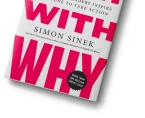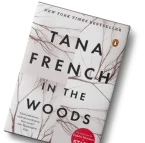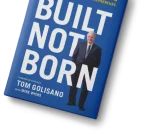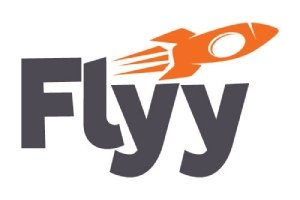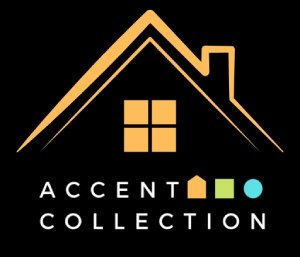
Self publishing has grown into a strong publishing path for Indian authors. With the rise of the best self-publishing companies in India, writers no longer need to wait months for approval from traditional publishers. Today, you can choose how your book looks, when it gets released, and where it reaches.
But with so many self-publishing companies in India, the real challenge is finding a partner that offers quality, transparency, and real support. Some Indian self-publishing companies focus only on printing. Others promise everything but deliver very little. That is why picking the best self-publishing company in India matters more than ever.
Good publishing support helps you move from draft to final book with ease. It covers editing, design, printing, eBook creation, and distribution. The best book self-publishing house in India will also help you reach readers in India and across the world through Amazon KDP, IngramSpark, and online bookstores.
This list brings you the top self-publishing companies in India, along with what they do best. Whether you want expert guidance, the cheapest self-publishing in India, or complete creative control, this guide shows you what each platform offers and how they support authors at different stages of their journey.
1. Estorytellers
Estorytellers is more than just a self-publishing company—it’s a partner that walks authors through every stage of the process. No matter if you’re starting with nothing, a rough draft, or a fully polished manuscript, Estorytellers provides ghostwriting, developmental editing, copyediting, formatting, and custom cover and interior design. They support print-ready versions for both paperback and hardcover, plus optimized eBooks. Their team also manages metadata setup, KDP and IngramSpark uploads, global distribution planning, and even advertising campaigns and social media assets.
Authors praise Estorytellers for its seamless experience and cohesive support. Instead of hiring separate freelancers, your team is unified under one roof, which saves time, stress, and coordination. This integrated approach helps your book launch with professional polish across all channels.
What’s great? Estorytellers stands apart because they offer a genuine end-to-end service:
- Ghostwriting & developmental editing: Shape raw ideas into compelling narratives.
- Copyediting & proofreading: Ensure your final draft is polished.
- Professional cover & interior design: Works that stand out in thumbnails and print.
- Formatting for eBook, paperback, hardcover: All formats, ready for any platform.
- Metadata optimization: Amazon, bookstore, ebook store friendly.
- Printing & Distribution support: KDP, IngramSpark, Barnes & Noble Press, Apple Books.
- Marketing & launch strategy: Ads, email campaigns, promotion calendars.
Why this matters: Instead of handling freelancers, you work with one trusted team. You retain creative control, but gain expertise, quality, and efficiency.
Pros:
- A single source for writing, editing, design, and distribution.
- Packages tailored to your needs—only pay for what you want.
- Deep experience with every major self-publishing platform.
Cons:
- Higher upfront investment than DIY, but much lower than traditional publishing.
Best For: Authors who want professional results without juggling multiple vendors.
Confused About Which Publishing Company to Choose?
Talk to our expert publishing consultants for free. We help first-time authors with writing, editing, and complete self-publishing support.
Get Expert Help2. Write Right: A Trusted Self-Publishing Partner for Professional Authors
Write Right ranks among the best self publishing companies in India because it blends creative precision with industry-grade quality. Authors choose Write Right when they want a reliable partner who will treat their manuscript with care while offering complete publishing support.
Write Right is known for being one of the best self-publishing houses in India, especially for authors who want strong editorial help and a polished final book. Their team works closely with writers, making them a dependable choice among modern Indian self-publishing companies.
Why Write Right Is a Strong Publishing Platform
Professional Editing & Content Support
Write Right’s editorial team strengthens your book with sharp editing, proofreading, rewriting support, and narrative guidance. This makes it ideal for authors who want clarity and impact.
High-Quality Design and Formatting
From creative book covers to clean interior layouts, they ensure your book looks professional across print and digital editions.
End-to-End Publishing Services
The platform offers everything needed for smooth publishing, including manuscript review, formatting, printing, eBook creation, and distribution help.
Affordable & Transparent Packages
Write Right offers budget-friendly choices, making it a practical option for authors searching for the best self-publishing company in India without overspending.
Ideal For:
Writers who want strong editorial input, professional design, and a dependable support system from the first draft to final publication.
Want to Self-Publish But Don’t Know Where to Start?
Our team of professional ghostwriters and editors can bring your book to life. Get guidance from idea to launch — fiction, non-fiction, or poetry!
Book Free ConsultationTaletel: A Creative Publishing Space Built for New-Age Authors
Taletel has earned a place among the top self publishing companies in India because of its unique focus on storytelling and author satisfaction. Known for its friendly and flexible process, Taletel provides a supportive ecosystem for authors exploring self publishing for the first time.
As one of the fast-growing Indian self publishing companies, Taletel offers creative writing help, ghostwriting, and complete self-publishing guidance at accessible prices. This makes it a strong option for writers searching for the best book self publishing house in India with a personal touch.
Why Taletel Stands Out as a Publishing Platform
Story-Focused Publishing Support
Taletel specializes in ghostwriting and creative development, helping writers shape ideas into powerful stories before publishing begins.
Flexible & Budget-Friendly Plans
The platform offers some of the most cost-effective packages, making it an excellent choice for authors searching for the cheapest self publishing in India.
Clean Design & Thoughtful Layouts
Their design team creates engaging covers and readable interiors that match your genre and target readers.
Publishing Guidance for New Writers
Taletel offers personalised help with editing, formatting, printing, and listing your book on major online platforms.
Ideal For:
First-time authors, storytellers, and writers seeking creative support along with simple and affordable publishing services.
Need Help Choosing the Right Self-Publishing Partner?
We compare platforms, negotiate costs, and offer end-to-end book creation services. Trusted by 250+ first-time authors worldwide.
Talk to an Expert4. Draft2Digital
Draft2Digital makes eBook distribution to Apple Books, Kobo, Barnes & Noble, and other outlets a breeze. It’s free to upload, and they take just 10% of the retail price—well worth the convenience. The platform automatically converts your manuscript into different formats and offers easy royalties tracking.
What it does:
- Distributes eBooks to Apple Books, Kobo, Barnes & Noble, and more.
- No setup fee; takes ~10% of royalties.
Pros:
- Effortless distribution management.
- Provides useful sales analytics and auto-conversion tools.
Cons:
- Reduced royalty share.
- No print book distribution.
Tip: Use with KDP to cover all bases—Amazon and other eBook channels.
Writing a Book? Publish It With Confidence.
We handle everything — ghostwriting, editing, design, and listing on Amazon. Become a published author in 90 days.
Schedule Your Call5. BookBaby
BookBaby positions itself as a one-stop shop, offering editorial, design, printing, and distribution services. They handle all major online retailers, offer ISBNs and barcodes, and provide marketing tools like email templates and press kits. You can choose from tiered packages, depending on your budget.
This streamlined option is best for authors who want professional polish but prefer a direct service. Compared to Estorytellers, BookBaby can be more template-driven and less customizable. While both offer curated support, Estorytellers focuses more on personalized strategy and more flexible service choices.
What’s included:
- Editing, cover design, formatting, and distribution.
- Access to bookstore and library markets.
- Marketing tools like press kits and email campaigns.
Pros:
- Professional, concierge-level support.
- One-stop service to launch life-ready books.
Cons:
- Prices range from $500 to $2,500 depending on package.
- Varying royalty structures across distribution channels.
Tip: BookBaby is a good traditional self-pub option, compare closely with Estorytellers’ customized offerings.
Looking for a Done-for-You Publishing Solution?
Let our experienced team ghostwrite, edit, and publish your book with full creative control and 100% royalties.
Start Your Author Journey6. PublishDrive
PublishDrive operates on a subscription model, starting around $17 per month, with no royalty cuts. You can distribute to hundreds of retailers, including niche and foreign outlets, and gain access to detailed analytics, promotions, and sales forecasting tools.
It’s perfect for high-volume authors who care deeply about sales insights. The revolving monthly cost means it works best when you have multiple titles—otherwise, you might overpay. Estorytellers can work with PublishDrive clients to integrate data-driven strategies into marketing and future launches.
Why it’s different:
- Annual subscription starting at $16.99/month.
- Distribute to over 400 digital retailers.
- Keep 100% royalties and use built-in analytics.
Pros:
- No royalty cuts.
- Excellent analytics and promotion tools.
Cons:
- Monthly cost, best for high-volume publishing authors.
Tip: Go this route if you’re producing a high volume of eBooks and don’t want any royalty deductions.
Not Sure How to Turn Your Idea into a Published Book?
Our ghostwriting experts will craft your story and help you self-publish with ease. Fiction, memoir, or business book — we’ve got you covered.
Get Started Now7. Smashwords
An early entrant in eBook distribution, Smashwords specializes in libraries and certain smaller platforms. It’s free and ideal for niche genres and academic content. However, the interface feels dated, and discovery tools are limited.
If library reach matters for your title, Smashwords is worth considering alongside other platforms.
What it offers:
- Free distribution to libraries and smaller platforms.
- Built on public domain-friendly and long-form support.
Pros:
- No fees to publish.
- Ideal for library and academic audiences.
Cons:
- Outdated interface.
- Limited marketing tools.
Tip: Use for niche or public domain works; pair with Estorytellers for updates and ebook optimization.
Dreaming of Becoming a Published Author in 2026?
From ghostwriting to publishing, we manage everything under one roof. Your story, our expertise — fully customized for your vision.
Claim Your Free Strategy Call8. Lulu
Lulu is a standout for print-on-demand options like spiral-bound notebooks, photo books, and glossy coffee-table formats. Their royalty rates are generous: 80% for print and 90% for eBooks. Distribution to major retailers is available, though not as automatic as with IngramSpark.
For authors creating photography books, illustrated guides, or specialty formats, Lulu offers appealing royalties and customization.
Why use it:
- Earn 80% on print books, 90% on eBooks.
- Great for photo books, art books, and spiral-bound formats.
- ISBNs included for free in basic plans.
Pros:
- Excellent earnings on specialty books.
- Flexible book formats and craftsmanship.
Cons:
- Limited automatic distribution to major retailers.
Tip: If you’re producing design-heavy or art books, Lulu plus Estorytellers’ design talent is a winning combo.
Dreaming of Becoming a Published Author in 2026?
From ghostwriting to publishing, we manage everything under one roof. Your story, our expertise — fully customized for your vision.
Claim Your Free Strategy Call9. Apple Books for Authors
Publishing on Apple Books is free, with a generous 70% royalty across all price points. Great for reaching Apple device users and accessing curated editorial sections. The downside is that it’s eBook only and requires Mac-compliant formatting (ePub).
What it offers:
- Free publication directly to Apple’s ecosystem.
- 70% royalties across all price points (no tier).
- Great for Apple device readers.
Pros:
- Strong payoff and straightforward pricing.
- Access to Apple’s editorial and promotional platform.
Cons:
- Limited to eBook format only.
- Requires Apple device optimization.
Tip: Always include Apple Books in your distribution plan; Estorytellers can handle cover sizing and metadata tweaks for maximum visibility.
Struggling to Choose the Best Self-Publishing Route?
We simplify the process for you with professional writing and guided publishing. Talk to India’s leading ghostwriting & self-publishing agency.
Talk to Our Team10. MindStir Media
This service offers high-touch support similar to Estorytellers, including editorial coaching, design, and launch planning. Known for its personal, boutique feel, MindStir helps authors with title structure, series planning, and marketing strategy.
The “concierge” model comes with a higher price tag, and their packages may feel less customizable than Estorytellers’s flexible offerings. If you want intimate coaching but prefer more price transparency and tailored services, Estorytellers may suit you better.
Why it stands out:
- Offers editing, design, coaching, and launch planning.
- Personal, boutique service for authors.
Pros:
- Dedicated support in big-picture strategy.
- Quality yields from hands-on partnership.
Cons:
- Premium pricing generally higher than DIY platforms.
- Authors might find it more scripted than Estorytellers’ flexible packages.
Tip: Perfect for authors wanting guidance over autonomy—but compare against Estorytellers for flexibility, price, and service.
Have a Story but Not Sure Where to Begin?
Let our expert ghostwriters and self-publishing team bring your vision to life. We turn rough ideas into beautifully published books.
Start Your Author JourneyChoosing the Right Path
Know what you want:
- Want pro-level support and a one-stop shop? Choose Estorytellers.
- Leaning to DIY with Amazon only? Go with KDP.
- Need bookstore distribution? Add IngramSpark.
- Want eBook reach beyond Amazon? Add Draft2Digital.
- Publishing promo-heavy or specialty books? Use Lulu.
Choose based on:
- Platform reach (digital vs. print, global vs. niche)
- Support level (DIY vs. hands-off services)
- Budget (free self-pub vs. full-service packages)
- Royalty goals (70% vs. 80–90% or unrestricted)
Final Takeaway
In 2026’s self-publishing ecosystem, there’s a perfect option for every author. But if you want creative freedom backed by expert polish and marketing power, Estorytellers is the standout choice. They mix the strengths of DIY and full-service publishing to get you published, seen, and selling… beautifully.
Publish smart, partner right, and share your story with confidence.







